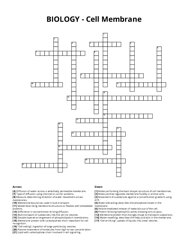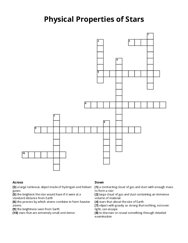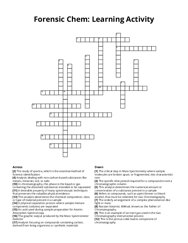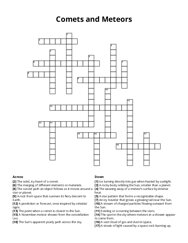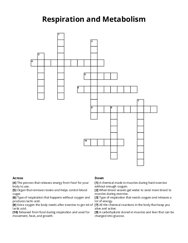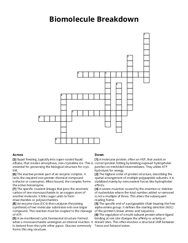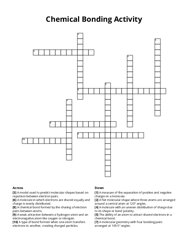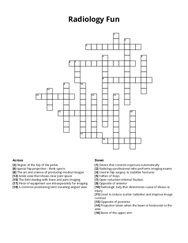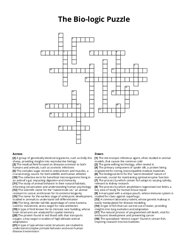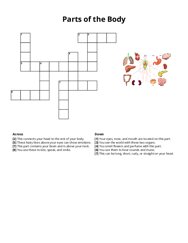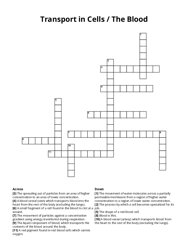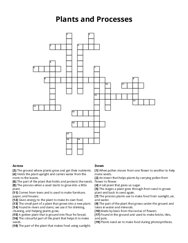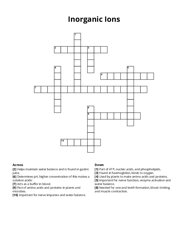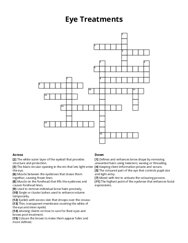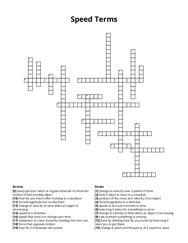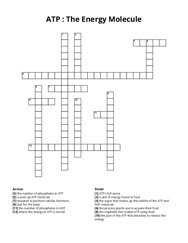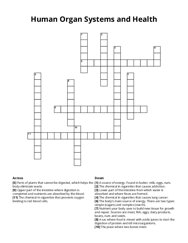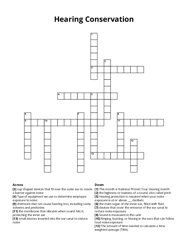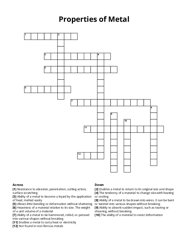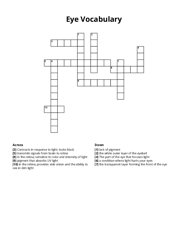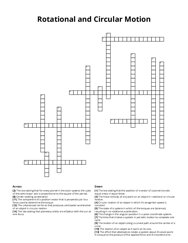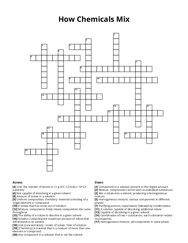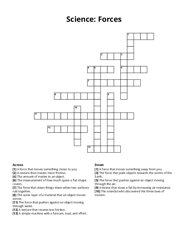Categories
- Agriculture / Farm
- Animals
- Arts / Crafts
- Beauty / Fashion
- Books / Literature
- Business / Finance
- Cities / Places
- Computers / IT
- Ecology / Climate
- Electronics
- Energy / Utilities
- Food / Drinks
- General
- Geography
- Geology
- Health / Fitness
- History
- Home / Garden
- Jobs / Education
- Kids / School
- Law / Government
- Music / Movies / TV
- News / Media
- Occasions
- Christmas
- Easter
- Halloween
- New Year
- Saint Patrick's Day
- Thanksgiving
- Valentine's Day
- Outdoors
- Religion / Belief
- Safety / Prevention
- Science
- Astronomy
- Biology
- Chemistry
- Physics
- Seasonal
- Society / Culture
- Sports
- Tools / Equipment
- Travel / Tourism
- Vehicles
Science Crossword Puzzles
Free printable science crossword puzzles. Download pre-made or create your own Crossword using our crossword maker. Simply download, print and start playing or play online.
molecule forming the basic bilayer structure of cell membranes, double-layered arrangement of phospholipids in membranes, “cell drinking”; uptake …
properties of elements vary in a repeating pattern when arranged by atomic number, chart of elements arranged by atomic number showing recurring …
a large luminous object made of hydrogen and helium gases, to discover or reveal something through detailed examination, the brightness seen from …
highness or lowness of sound, loudness or softness of sound, the energy visible to the eyes, is created by vibration, allow light to pass, allow some …
this analysis determines the chemical composition, class, or type of material present in a sample, this analysis determines the numerical amount or …
a rock from space that survives its fiery descent to earth, an icy traveler that grows a glowing tail near the sun, a prediction or forecast, once …
the process that releases energy from food for your body to use, type of respiration that needs oxygen and releases a lot of energy, type of …
a molecular protein, often an hsp, that assists in correct protein folding by binding exposed hydrophobic patches on misfolded intermediates. they …
a type of bond formed when one atom transfers electrons to another, creating charged particles, a chemical bond formed by the sharing of electron …
the smallest particle of an element, the science of substances and their properties, the highest degree that is awarded by a university, something …
father of xrays, a common positioning term meaning angled view, bone of the upper arm, device that controls exposure automatically, used in hip …
the process by which amphibians regenerate lost limbs, a key area of study for human tissue repair, a marsupial with a unique pouch, whose immune …
a green pigment in the leaves of plants, the process where plants use sunlight, water and carbon dioxide to make food and release oxygen, a simple …
you use them to hear sounds and music, you smell flowers and perfume with this part, these hairy lines above your eyes can show emotions, you see the …
the spreading out of particles from an area of higher concentration to an area of lower concentration, the movement of water molecules across a …
the small part of a plant that grows into a new plant, the ground where plants grow and get their nutrients, the part of the plant that grows under …
part of atp, nucleic acids, and phospholipids, important for nerve impulses and water balance, important for nerve function, enzyme activation and …
muscle on the forehead that lifts the eyebrows and causes forehead lines, muscle between the eyebrows that draws them together, causing frown lines, …
rate at which something is moving, speed in a direction, change in velocity to time when an object is increasing, time it takes to react to a …
a used up atp molecule, the organelle that makes atp using food, a unit of energy found in food, required to perform cellular functions, atp\'s …
parts of plants that cannot be digested, which helps the body eliminate waste, the body’s main source of energy. there are two types: simple …
a type of wave where the oscillations are perpendicular to the direction of energy transfer, a type of wave where the oscillations are perpendicular …
the direction of a reaction is determined by the change in...?, if Δg < 0, the process is...?, the amount of heat emitted or absorbed in a process …
sound is measured in this unit, type of equipment we use to determine employee exposure to noise, hearing protection is required when your noise …
ability to absorb sudden impact, such as tearing or shearing, without breaking, not found in non-ferrous metals, the tendency of a material to change …
a condition where light hurts your eyes, lack of pigment, the transparent layer forming the front of the eye, the part of the eye that focuses light, …
the law stating that planetary orbits are elliptical with the sun at one focus, the motion of an object along a curved path around the center of a …
amount of solute in a solution, mix a solute into a solvent, producing a homogeneous mixture, purifying process, vaporization followed by …
equipment that can be used to separate insoluble solid from liquid, a cone shaped piece of equipment that can be used to get liquid or powder into a …
the force that slows things down when two surfaces rub together, the force that pushes against an object moving through the air, the force that pushes …
